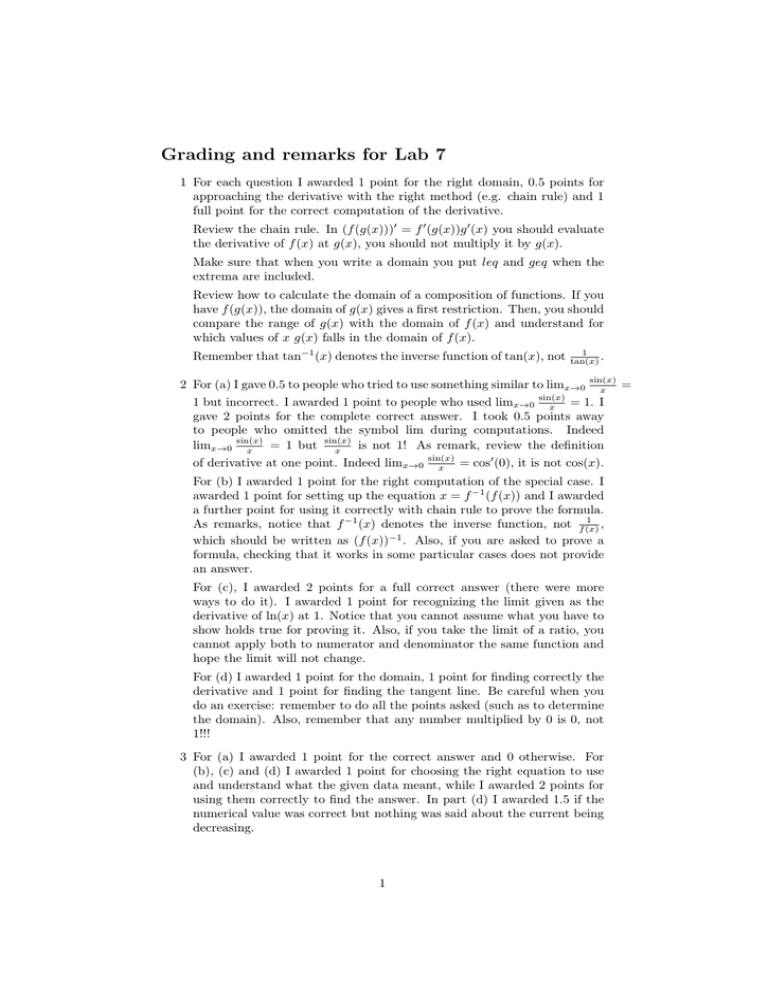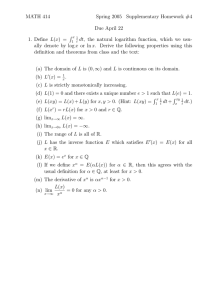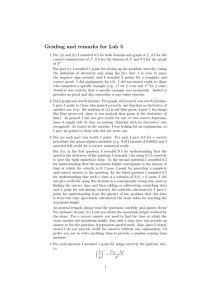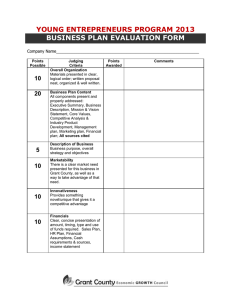Grading and remarks for Lab 7
advertisement

Grading and remarks for Lab 7 1 For each question I awarded 1 point for the right domain, 0.5 points for approaching the derivative with the right method (e.g. chain rule) and 1 full point for the correct computation of the derivative. Review the chain rule. In (f (g(x)))0 = f 0 (g(x))g 0 (x) you should evaluate the derivative of f (x) at g(x), you should not multiply it by g(x). Make sure that when you write a domain you put leq and geq when the extrema are included. Review how to calculate the domain of a composition of functions. If you have f (g(x)), the domain of g(x) gives a first restriction. Then, you should compare the range of g(x) with the domain of f (x) and understand for which values of x g(x) falls in the domain of f (x). Remember that tan−1 (x) denotes the inverse function of tan(x), not 1 tan(x) . 2 For (a) I gave 0.5 to people who tried to use something similar to limx→0 sin(x) = x = 1. I 1 but incorrect. I awarded 1 point to people who used limx→0 sin(x) x gave 2 points for the complete correct answer. I took 0.5 points away to people who omitted the symbol lim during computations. Indeed limx→0 sin(x) = 1 but sin(x) is not 1! As remark, review the definition x x of derivative at one point. Indeed limx→0 sin(x) = cos0 (0), it is not cos(x). x For (b) I awarded 1 point for the right computation of the special case. I awarded 1 point for setting up the equation x = f −1 (f (x)) and I awarded a further point for using it correctly with chain rule to prove the formula. 1 As remarks, notice that f −1 (x) denotes the inverse function, not f (x) , −1 which should be written as (f (x)) . Also, if you are asked to prove a formula, checking that it works in some particular cases does not provide an answer. For (c), I awarded 2 points for a full correct answer (there were more ways to do it). I awarded 1 point for recognizing the limit given as the derivative of ln(x) at 1. Notice that you cannot assume what you have to show holds true for proving it. Also, if you take the limit of a ratio, you cannot apply both to numerator and denominator the same function and hope the limit will not change. For (d) I awarded 1 point for the domain, 1 point for finding correctly the derivative and 1 point for finding the tangent line. Be careful when you do an exercise: remember to do all the points asked (such as to determine the domain). Also, remember that any number multiplied by 0 is 0, not 1!!! 3 For (a) I awarded 1 point for the correct answer and 0 otherwise. For (b), (c) and (d) I awarded 1 point for choosing the right equation to use and understand what the given data meant, while I awarded 2 points for using them correctly to find the answer. In part (d) I awarded 1.5 if the numerical value was correct but nothing was said about the current being decreasing. 1





